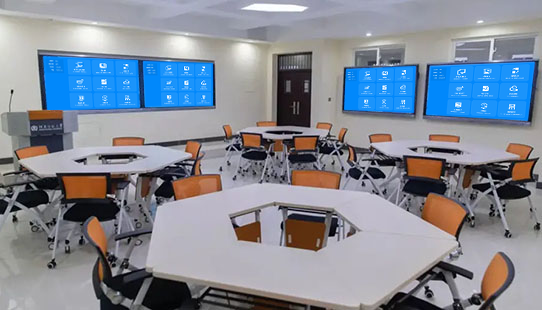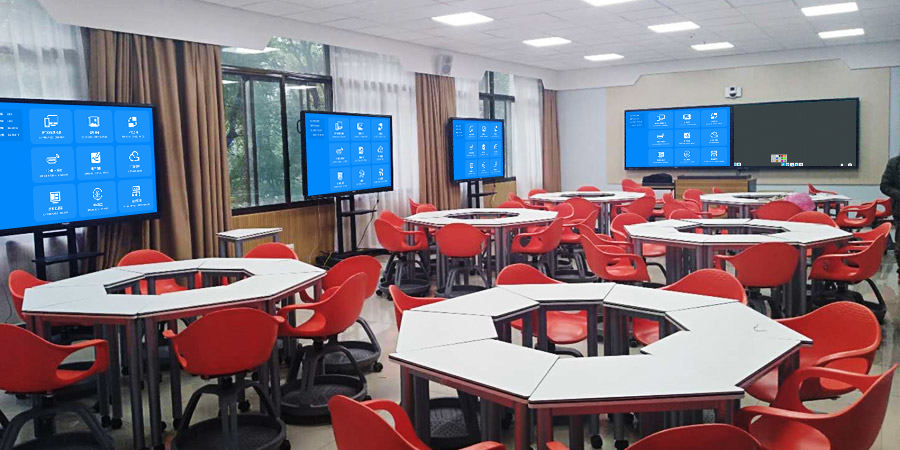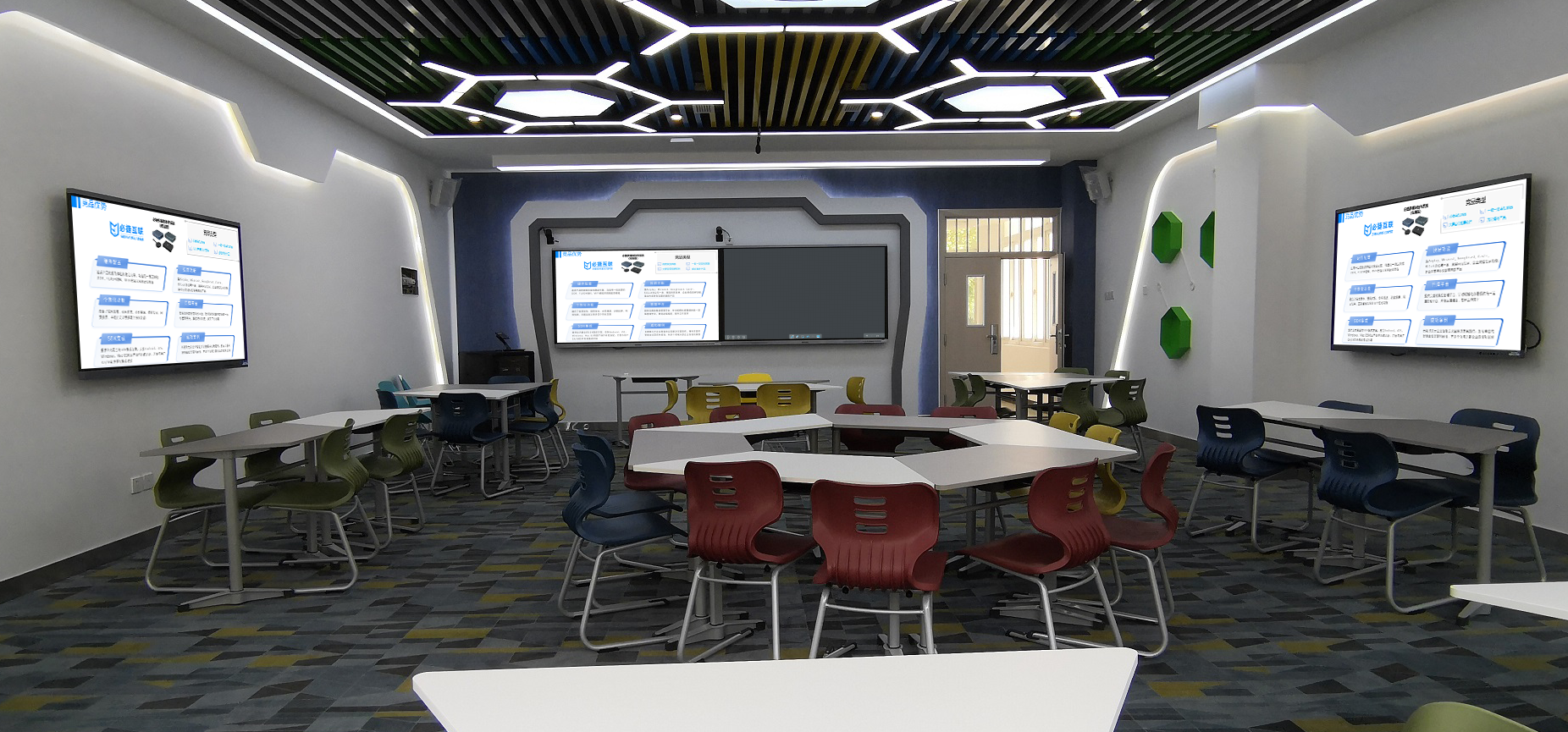Smart Classroom: An Intelligent Solution for Reconstructing Teaching Scenarios
In the wave of digital transformation in education, smart classrooms are evolving from concept to practice, becoming a core carrier for breaking the boundaries of traditional teaching and energizing classrooms. By integrating audio-visual interaction, wireless screen mirroring, intelligent collaboration, and other technologies, they transform one-way lectures into multi-dimensional interactions, making knowledge transmission more efficient, teaching management more convenient, and creating an immersive new teaching experience for teachers and students.
I. Full-Scenario Interactive Teaching: From “Listening” to “Participating”
The core value of smart classrooms lies in reconstructing teacher-student interaction models, empowering every student to become the “protagonist” of the class through technology:
-
Multi-screen collaborative sharing: The classroom’s main screen, group screens, and student terminals form an interconnected network. Teachers’ courseware is synchronized to the main screen via wireless casting, while students’ assignments and ideas can be cast to group screens for discussion via tablets or laptops. Outstanding work can be pushed to the main screen with one click for display. Supporting multi-protocol casting (AirPlay, Miracast, etc.), both Apple and Android devices can connect quickly, avoiding disruptions to interaction due to device differences.
-
Real-time annotation and feedback: The main screen is equipped with built-in electronic whiteboard tools, allowing teachers to mark key points directly on courseware—with annotations synchronized to all students’ terminals. Students can also leave questions or comments on teaching content via their devices; teachers can view these in real time on the main screen and provide targeted answers. This ensures “unspoken doubts” are addressed promptly, expanding classroom interaction from “raising hands to speak” to “full participation.”
-
Seamless group collaboration: The class can be divided into multiple groups, each discussing independently via local screens. Teachers can switch between groups to check progress and join any group for guidance. Group results can be aggregated on the main screen for comparative analysis, fostering students’ teamwork and critical thinking skills.

II. Seamless Integration of Teaching Resources: Breaking Time and Space Barriers
Smart classrooms leverage technology to connect the entire chain of teaching resource “acquisition-storage-reuse,” freeing high-quality content from classroom limitations:
-
Automatic class content recording: The system automatically records teachers’ lectures, student interactions, and whiteboard notes. It supports RTSP streaming protocol integration with the school’s recording system, with recorded files automatically uploaded to a cloud resource library, categorized by course and chapter. Students can review content after class by logging in with their accounts to fill knowledge gaps; teachers can also review lessons to refine their teaching methods.
-
Cross-platform resource access: Integrating third-party resources such as educational cloud platforms and digital textbook libraries, teachers can directly access high-quality courseware and micro-lectures during lesson preparation, then display them with one click via screen mirroring. It also connects to online question banks—randomly selected exercises can be cast to the main screen, and students can answer via clickers or mobile QR codes. The system automatically calculates correct rates, providing real-time feedback on learning progress.
-
Remote teaching compatibility: Built-in video conferencing functions support connections with external experts or remote classes. HD cameras and omnidirectional microphones capture 师生 images and voices, while remote guests’ courseware can be synchronized to the main screen. This achieves seamless integration of “local classes + remote resources,” expanding teaching boundaries.

III. Lightweight Deployment and Intelligent Management: Reducing Teaching Burdens
The value of smart classrooms lies not only in “intelligence” but also in allowing teachers to focus on teaching rather than technical operations:
-
Simplified operation 流程: All functions are activated with one click via a touchscreen or remote control—no complex settings for screen mirroring, recording, or group switching. Teachers log in with a QR code before class, and the system automatically retrieves prepared materials; after class, one click shuts down the system, with devices automatically uploading resources and powering off. Even new teachers can master it quickly.
-
Real-time device monitoring: Administrators can remotely monitor classroom equipment status via a backend system, such as projector brightness, microphone volume, and network connectivity. Abnormalities trigger alerts for remote troubleshooting, minimizing class disruptions due to equipment failures. It supports batch deployment of teaching scenarios (e.g., “open class mode,” “exam mode”) with one-click parameter adjustments, reducing management costs.
-
Data-driven teaching optimization: The system records interaction frequency, student answer accuracy, and resource usage, generating teaching analysis reports. Teachers can identify students’ weak areas to adjust teaching focus; school administrators can evaluate teaching quality to inform educational research improvements.
Smart classrooms, through deep integration of technology and teaching scenarios, free teachers from tedious operations, transform students from passive listeners to active participants, and enable teaching resources to flow efficiently beyond time and space. More than just an upgrade of equipment, they represent an innovation in teaching philosophy—infusing education with new vitality and making every classroom a hub of creativity and possibility.
